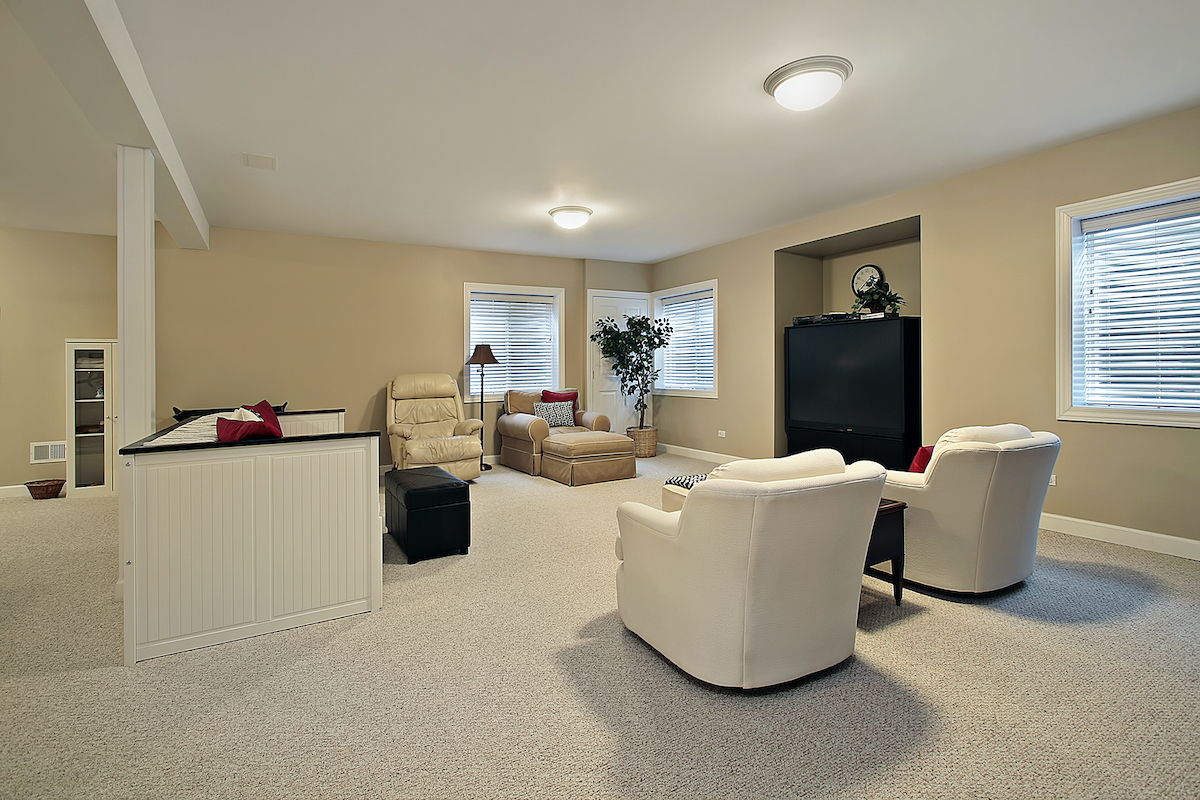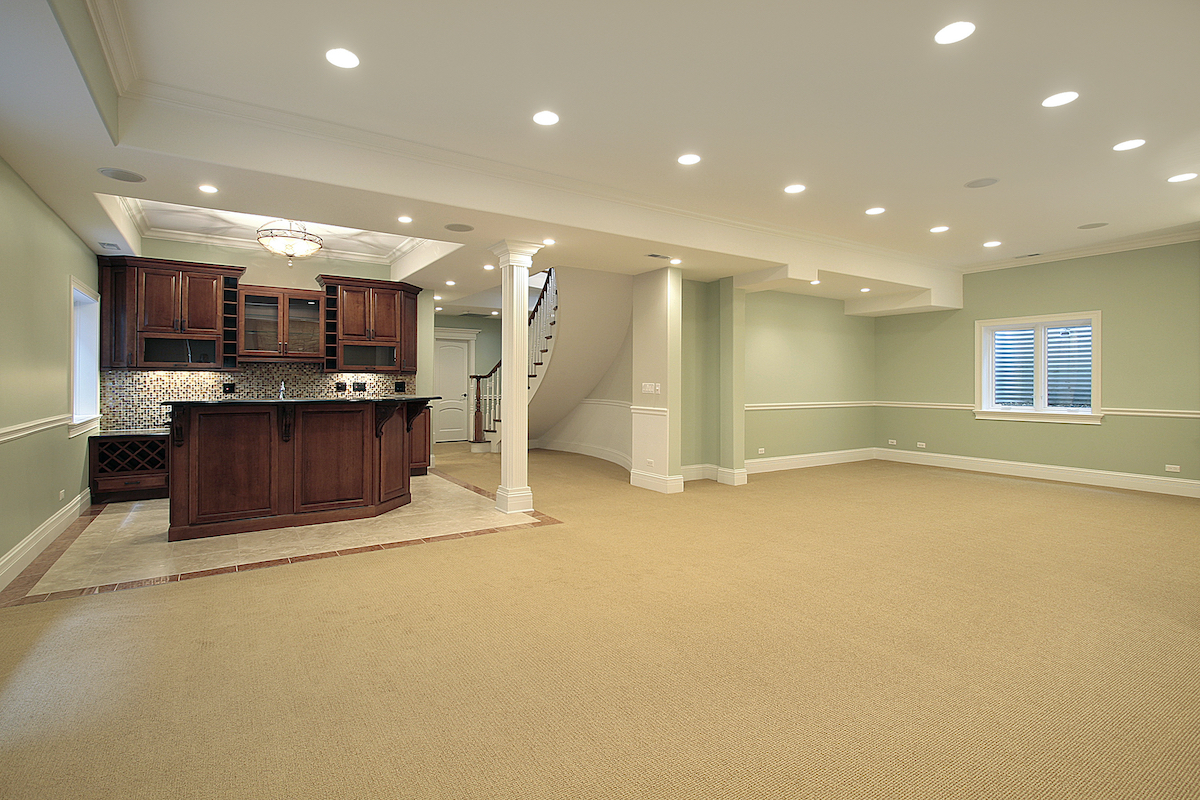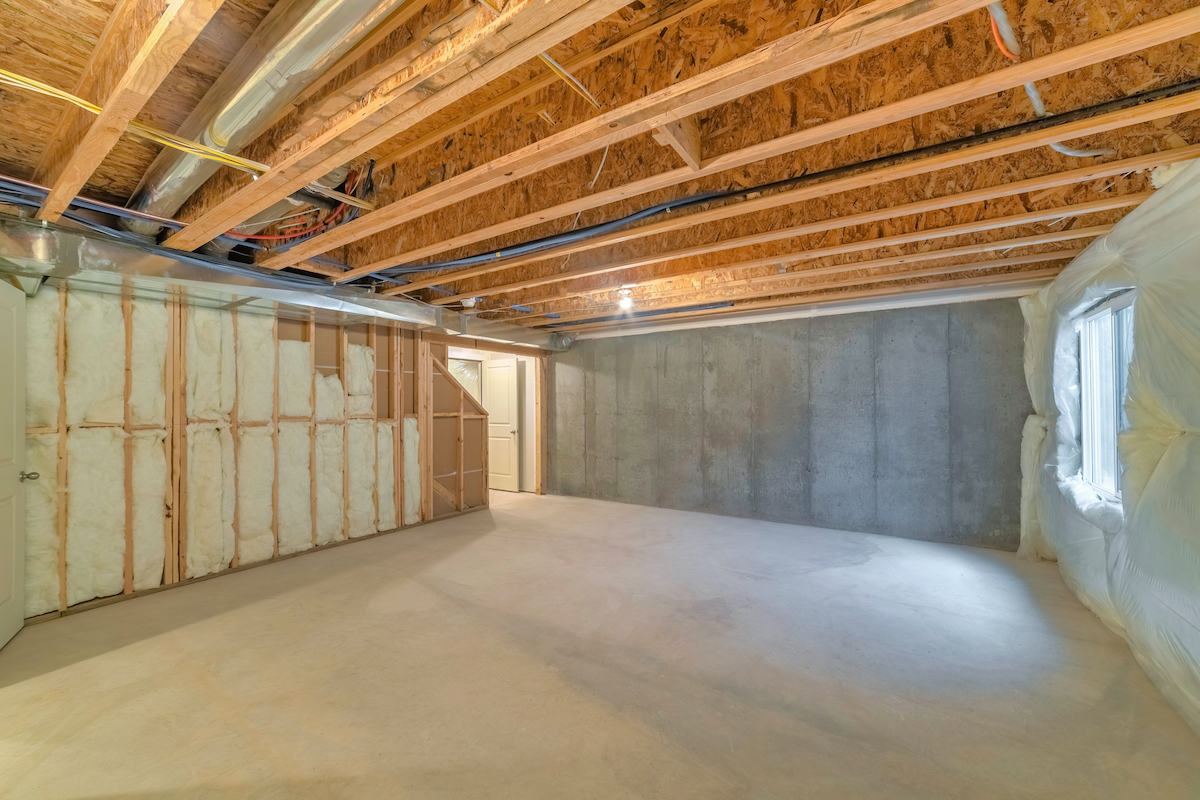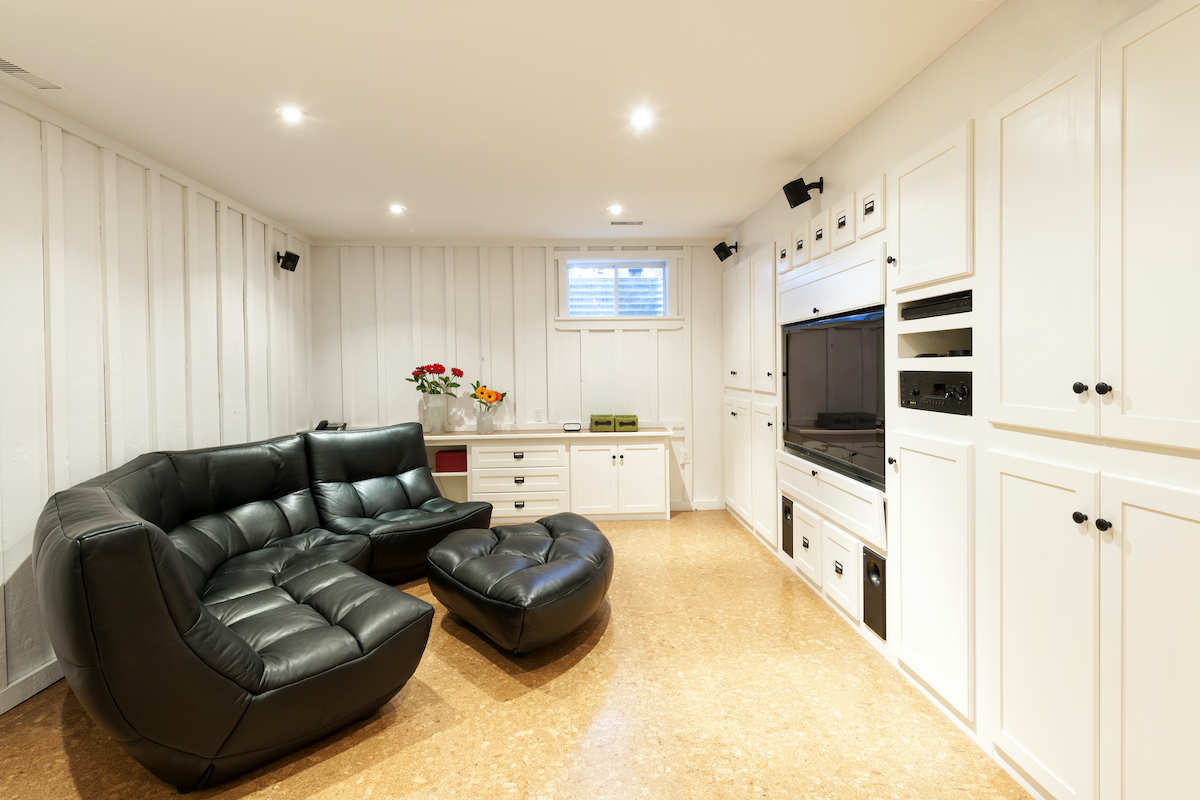We may earn revenue from the products available on this page and participate in affiliate programs. Learn More ›
Q: I’m trying to decide if the cost of finishing my basement is really worth it. I know it will add some additional living space while I still own the home, but I’m curious whether it will increase the gross living area and marketable square footage of the house if I sell it. When it comes to determining a home’s size, s a finished basement counted in square footage?
A: “Does a basement count in square footage?” is a question that many homeowners and future homeowners ask. Given that a home’s square footage affects the appraisal and financing of a property, it’s important for home buyers and sellers to get clarity on this issue.
It may seem logical to assume that a basement would count toward a home’s gross living area and square footage, especially if it is a finished basement that increases the usable living space.
The truth is that basements are rarely included in the calculations for the gross living area of a home, though there are a few exceptions to this rule. Read on for a more complete answer to the question, “is the basement counted in square footage?”

Only above-grade spaces count toward a home’s total square footage.
What counts in a home’s square footage usually depends on what spaces are above ground level. For example, Fannie Mae has strict regulations regarding which areas in a home can count towards the gross living area, or official square footage. Only above-grade portions of the home that are fully finished are included in the calculation.
Additionally, even if a portion of a finished basement is below grade, it will not be factored into the gross living area calculation. The entire level must be above grade in order for that space to factor in to the official square footage. This almost always means that if any portion of the basement is below grade, the entire level will typically be excluded from the calculation of the home’s square footage.
In most cases, even finished basements with egress windows are not calculated as part of a home’s square footage.
Does a finished basement count as square footage? Even if you’ve followed all the local regulations and rules for finished basements and have egress windows in the space, it is unlikely to count toward your home’s total square footage. When determining whether a basement can be added included in the calculation, the quality of the finishes is not as important as whether or not the space is below grade.
However, keep in mind that while a finished basement may not officially count towards the square footage of your home, there are still laws requiring egress windows and/or escape routes for below-grade living spaces. Check your local codes and permitting offices to learn more about the specific regulations in your area.

Some states may count above-grade portions of a walkout basement as part of a home’s total square footage.
Does a walkout basement count as part of a home’s official square footage? A walkout basement is one with a legal ingress or egress, or a door leading directly outside.
Some states will factor in the area of a walkout basement when calculating the home’s official size. This isn’t true in all states, so it is best to consult with local regulations or a real estate agent to determine how a walkout basement is perceived in your area. Typically, only the above-ground portions of the level will be factored into the home’s square footage.

Unfinished and unconditioned basements do not contribute square footage.
Does an unfinished basement count in square footage? An unfinished basement is not included in a home’s square footage. In fact, in the few cases where a basement counts toward a home’s gross living area (such as some walkout basements), the finishes must match the standards and quality used in the rest of the house. This means that you have to finish the basement walls and floors, and they can’t appear significantly different or more dated than the finishes on the other levels of the home.
Furthermore, a basement must be conditioned to be included in the square footage of a home. This means that a comparable heating and cooling system that’s used in the rest of the house must be used in the basement as well. Space heaters to warm up the basement or other portable heating or cooling solutions will not count for this requirement.

Even if it is not calculated as part of a home’s square footage, a finished basement can still add value at resale.
There are many benefits to finishing a basement. Even though the answer to “does a basement count as square footage?” is usually no, the extra livable space will still help make your home more appealing to potential buyers. Unlike commercial real estate that is strictly valued on square footage, a finished basement that doesn’t add to the total gross living area can still increase the value of your home.
When listing your home for sale, there are ways for you to draw attention to the work you have had done in your basement without including its area in the home’s legal square footage. You might, for example, highlight the size of the space and ways future owners might use it—maybe it’s the perfect size for a movie room, home office, or play room. If you’ve had any “invisible” work done, such as adding a sump pump or waterproofing the basement walls, make sure to emphasize those features in the listing. Finally, don’t forget to include photographs that showcase your lower-level space—you want potential buyers to envision themselves enjoying it.


